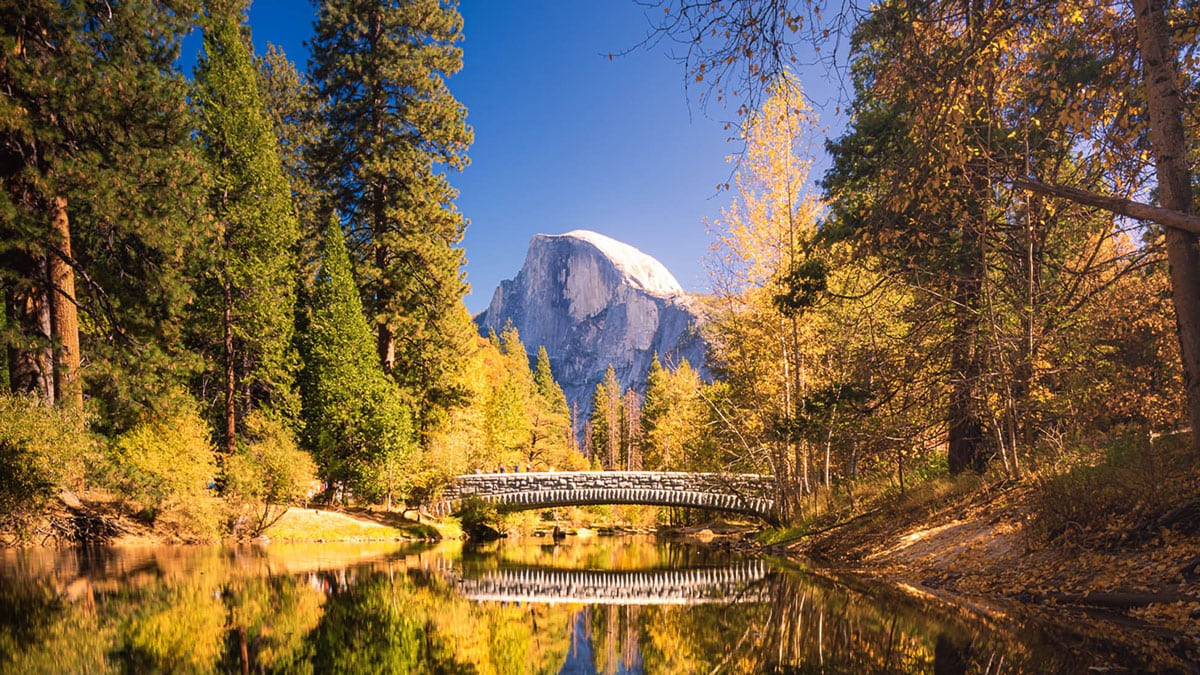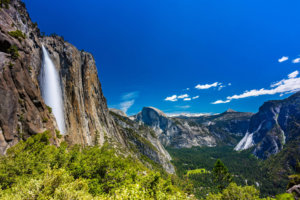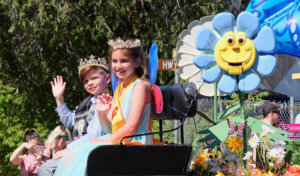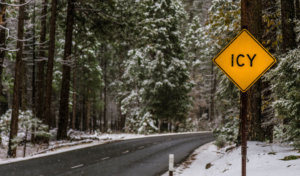As chilled lemonade gives way to steaming pumpkin spice lattes and flip flops are swapped out for puffy ugg boots, the transition from summer to autumn is a special time of year in the High Sierra. This changing of the seasons brings fewer visitors and more locals out and the opportunity to immerse yourself in one of Mother Nature’s most spectacular shows. Fall color “vividosity.”
Yes, the bold colors are upon us. And whether you call it leaf chasing, leaf peeping, or just escaping to the mountains for some crisp clean air and electric hues, there’s nothing like a Yosemite Mariposa fall getaway to restore balance and bring all that you love and cherish into clear focus.
Why Is Yosemite Mariposa So Unique?
There’s a saying here: spring marches uphill, fall marches down. Translation? That the lower elevations are the first to see the unfolding of spring, while the higher elevations are the first to see the brilliant effects of autumn’s cooler temperatures and shorter days.
With its wide range of elevations and mixed forests, Yosemite Mariposa offers a rare opportunity to “chase” these sprays of colorful leaves as they tremble and dance in the breeze. From our subalpine peaks to rolling Gold Country foothills, this festival of foliage can be enjoyed within an easily navigable distance over a period of weeks, even months at some locations, and is complemented by comfortable lodging and tasty food that make the leaf chasing experience second to none.
Color Wheel: Quick Guide To Yosemite Mariposa’s Fulgent Flora
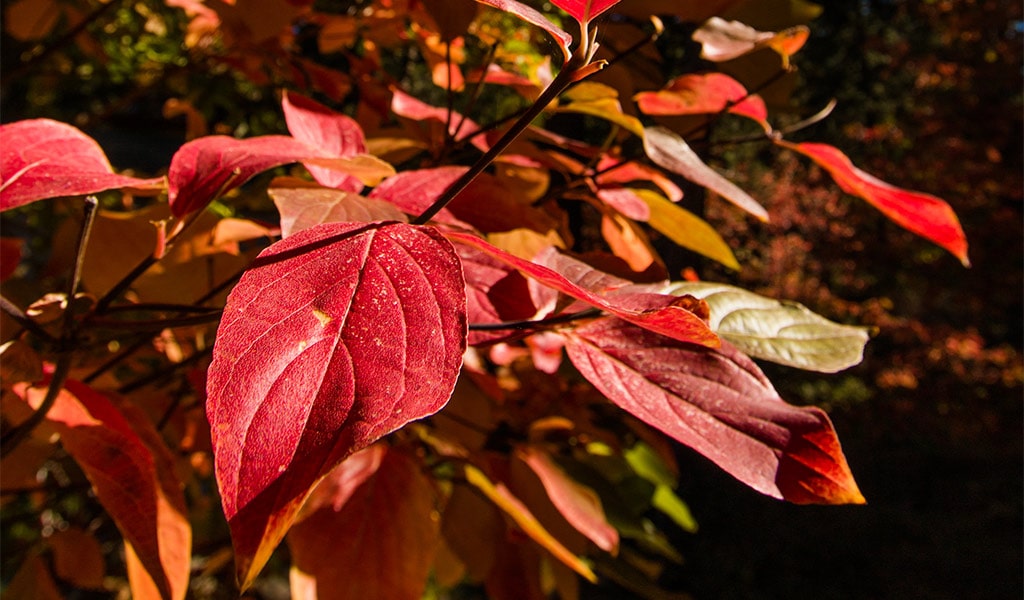
Fulgent, as in shining brightly (we had to look it up, too). Here’s a list of what fulgent foliage to look for and their autumnal appearances:
- Quaking Aspen (golden yellow)
- Dogwood (red)
- Heath/Goose/wild berries (orange, yellow, red)
- Sugar Maple (red)
- Bigleaf Maple (yellow)
- Oak (yellow/orange/brown)
- Cottonwood (yellow)
- Poison Oak at lower elevations (red/purple). Have to admit it’s kind of pretty in fall…from a distance!
Leaf Peeping the High Country
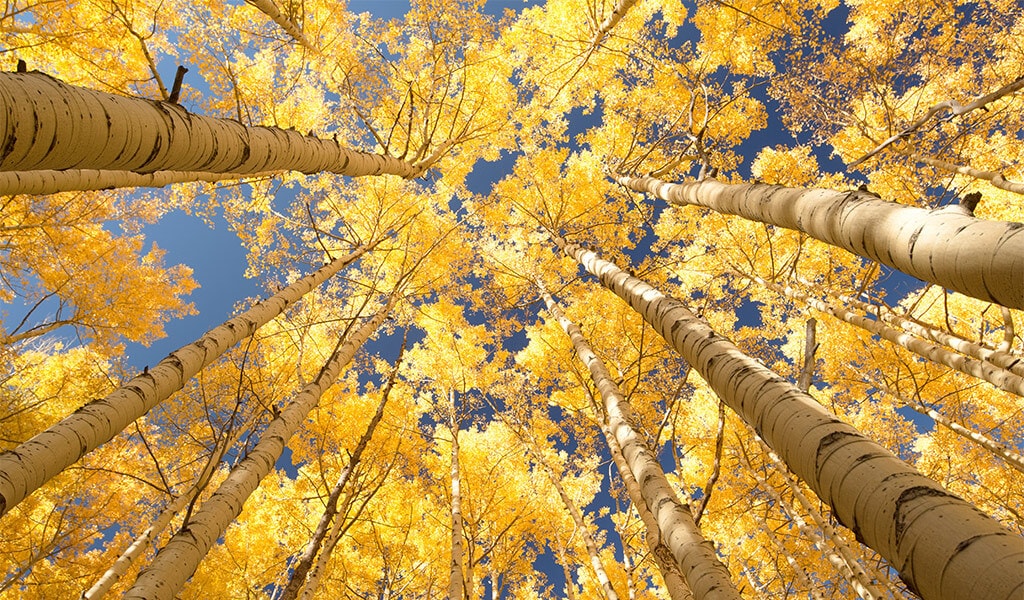
The High Country of Yosemite Mariposa is the first to open its curtain on the stage of fall color. As the mercury drops and the surrounding peaks gird themselves for the first snow, the leaves’ green chlorophyll gives way to a palette of autumnal bliss. Though chasing fall color depends on numerous climate conditions and borders on an art form, late September through October is generally a good target.
Tioga Road rises dramatically above Yosemite Valley as it crests the Sierra divide offering an aerial perspective on the color below. Olmsted Point exemplifies this bird’s eye view with easy parking and clear sightlines to the north face of Half Dome (Pro Tip: bring a pair of binoculars for color up-close-and-personal). At higher elevations, the trembling gold leaves of quaking aspen stand in stark counterpoint to the deep green conifers, while low growing wild berries (vaccinium) and other shrubs bring out oranges and reds. An easy roadside viewing can be had near the trailhead to Tuolumne Grove, or head to the Yosemite Creek Picnic Area for more quaking. (Bonus Pro Tip: continue over Tioga Pass to the Highway 395 corridor where steep canyons along the eastern slope of the Sierra often pop with fall color). Note: Tioga Road closes seasonally due to snowfall so be sure to check its status before setting out.
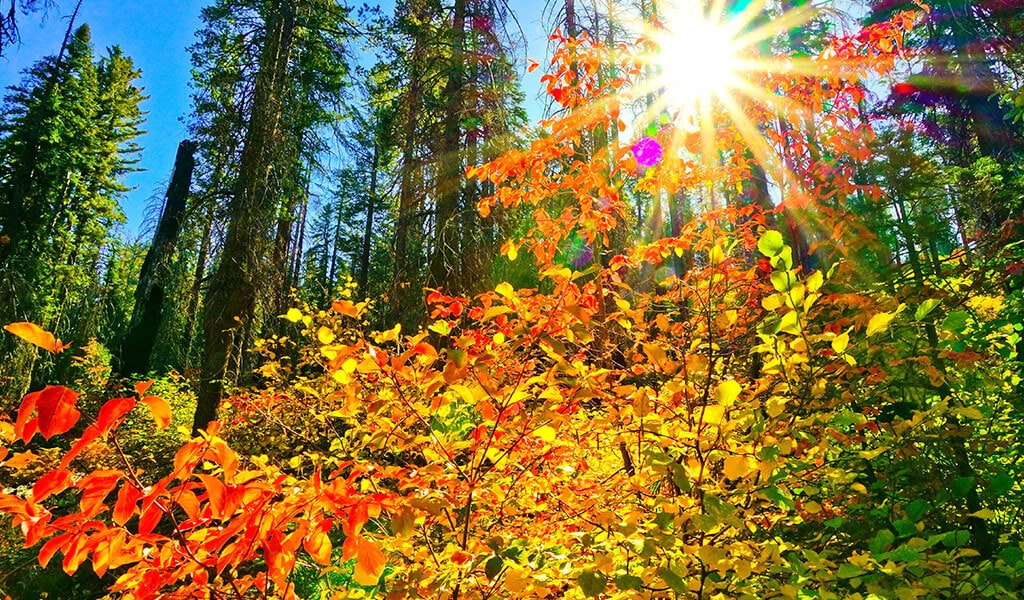
Glacier Point Road curves and climbs with equal drama above Yosemite Valley only this time on its south side. Approximately 10 miles from the junction of Wawona Road is Summit Meadow, where a few stands of aspen can be found, or stretch your legs with a tranquil walk from Badger Pass Ski Area along Old Glacier Point Road towards Bridalveil Campground where more groves delight. Low-growing, yellow deer brush also brightens up the landscape, and while you’re in the neighborhood head to the end of the road for some unbeatable views at the ever-popular (for good reason) Glacier Point.
For those who want fall color to be the cherry on top of a good workout, lacing up your hiking boots and sliding into a comfortable backpack is a great way to chase The Leaf Less Peeped. This strategy is simple: pick a trailhead and escape into the backcountry. The foliage is brilliant, and you’ll have a front row seat to the changing of the seasons. Backcountry wilderness permits are required for overnight stays, and be sure to bring the right gear while having respect for changeable weather conditions “” October snow showers are not uncommon.
Chasing Brilliance at Mid-Elevations (Yosemite Valley)
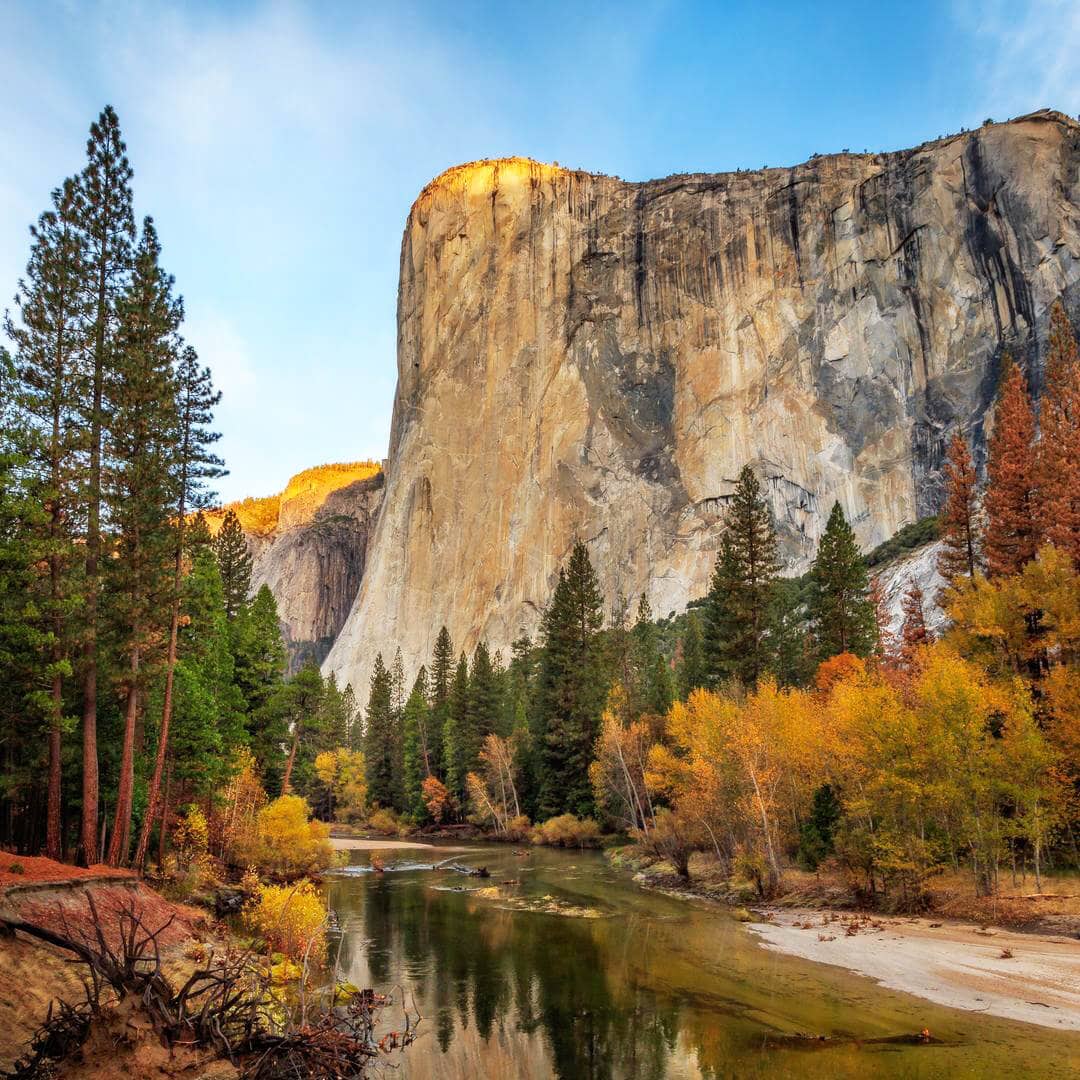
What many visitors don’t realize is that Yosemite Valley might feel way up in the High Sierra, but it actually sits at 4,000 feet thus earning mid-elevation status. Same goes for the Wawona (4,000 feet) and Hetch Hetchy (3,900 feet) areas, two other popular destinations within the Park. Here, the fall color can typically be chased a few weeks later than the High Country as autumn marches “downhill.” Think mid-October to mid-November.
Where to begin? The interplay between fall color, massive rock formations and the meandering Merced River creates pure magic. The south side of the valley features yellow cottonwoods and aspens which really pop against the shadowy granite cliffs behind, while red dogwoods dot the Happy Isles landscape at the eastern end of the Valley where waters from two canyons meet. The Sugar Maple next to the Yosemite Chapel (a non-native planted by early settlers and typically found in the Northeast) pairs pomp & piety with its brilliant orange-red glow, beseeching an Instagram post. Its cousin the Bigleaf Maple can be found sporting yellow throughout the valley, as can oaks which have a more brownish hue. (Pro tip: Look for brightly colored autumn leaves floating on still pools of the Merced River or strewn on granite rocks for a nice close-up.)
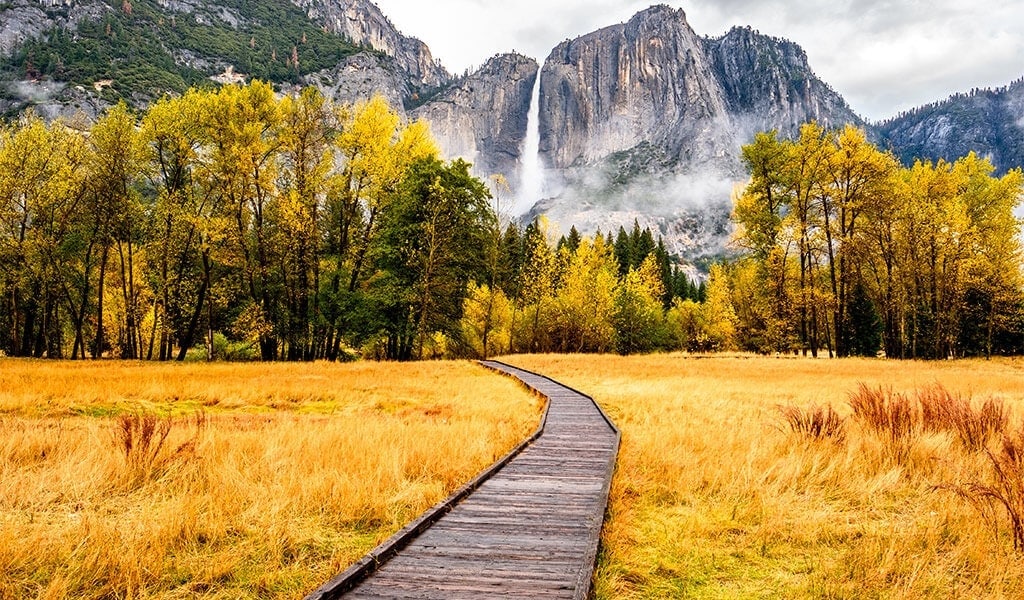
Wawona & Fish Camp
Located along Highway 41 (Wawona Road) in the southern reaches of Yosemite National Park, Wawona still exudes a village feel from its history as a Miwuk camp and later as way station for early tourists. The name of the peeping game here is much like the Valley with the yellow/browns of Bigleaf Maples, oaks, and cottonwoods, complimented by the pink/reds of dogwoods. For a nice stroll try the Wawona Meadow Loop and grab a bite at the historic Wawona Hotel Dining Room.
Located just a few miles from Wawona and at about 5,000 feet, Fish Camp serves as Yosemite’s Southern gateway as well as an early peek at what is set to come for the rest of the Gold Country in the weeks and months following. Since it is outside of the park, Fish Camp and it’s largest lodging option, Tenaya Lodge at Yosemite provide leaf seakers a great place to stop for Fall foliage. A local tip: drive up to Goat Meadow Snow Play Area and enjoy the meadow around the parking area or even embark out onto the Forest Service roads that spiderweb off from Goat Meadow for even more vibrant colors.
Striking It (Color) Rich in Gold Country
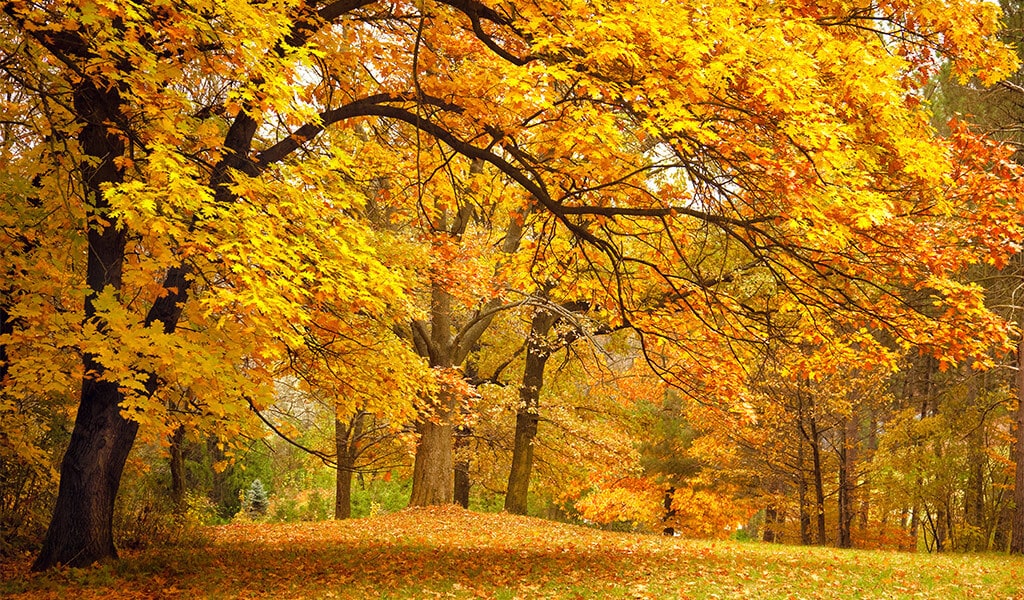
As we chase fall color downhill to Mariposa County’s lower elevations, the mountain pines give way to oak-studded foothills skinned with dry grasses the color of wheat. The mercury doesn’t drop until later in fall which typically translates to the season’s final show. A peaceful time to explore this history and color-rich region, nature’s inspiration for our iPhone saturation filters.
Highway 140/Merced River Canyon
Dutifully (and beautifully!) following the steep Merced River Canyon, Highway 140 is one of those two-lane roads where it’s comforting to know that it’s leading you exactly where you want to go. A few miles outside the Arch Rock Entrance to Yosemite National Park is the town of El Portal, and as follow the mighty Merced willows frame the flow, oaks leaves dangle, and cottonwoods light up yellow in the sun. Yep, there’s poison oak but keeping the perfect distance will give you an appreciation of leaves that range from the color of pinot noir to the cosmos at dawn. This area boasts great riverside picnic areas where visitors can enjoy the fall harvest al fresco.
The charming, historic main drag of old town Mariposa conjures up images of a bustling Gold Rush boomtown. Here the colors are often imports of early settlers, or more recent plantings by aesthetically astute locals. Maples and native oaks play nicely together, while the surrounding vineyards & orchards that supply award-winning wines & ciders turn wonderful hues after harvest. For a pleasant morning or evening stroll head a few blocks east to the Stockton Creek Preserve where the birds and the turtles play.
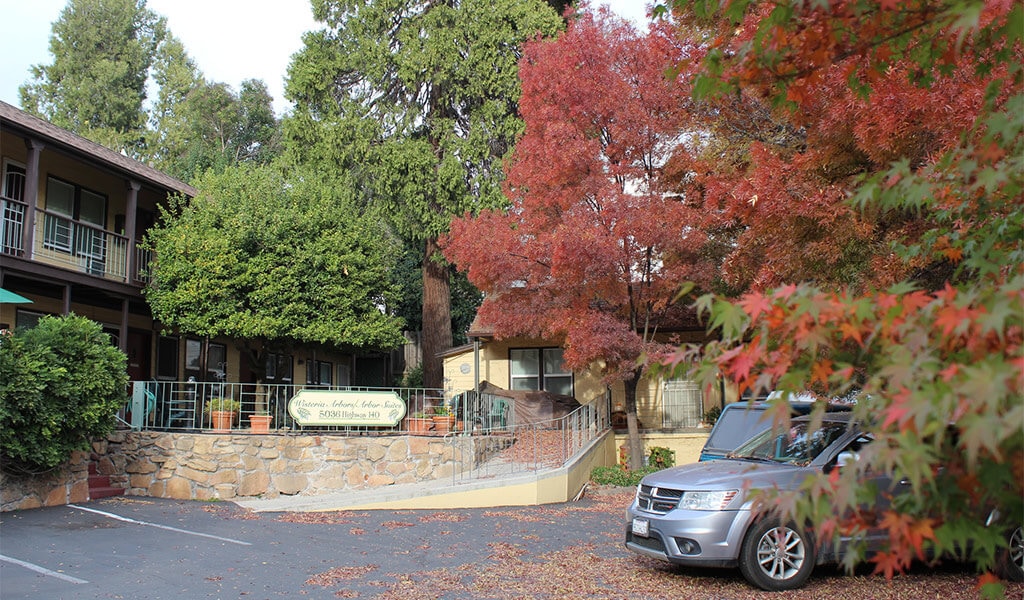
Southern Mariposa marks the finale of our autumn leaf chasing odyssey. This is where the Gold Country foothills begin to undulate like a gentle flume ride down to the flat farmland of California’s Great Central Valley. Catheys Valley (elevation 1,325 feet) boasts some of the richest grazing land in the American West, where fall colors are focused on the oaks that quickly turn to yellow and then brown to mirror the fields of grass around them. Twelve miles northwest lies Hornitos, a Gold Rush boomtown whose current population of 66 belies the 15,000 fortune seekers who called it home in the 1870’s. Now known for its architectural ruins, Hornitos is surrounded by oak woodlands and their moody fall golds. (Pro tip: Time your visit to include the local tradition of Dia De Los Muertos on November 2. This candlelit procession winds its way up the hill toward St. Catherine’s Catholic Church and to the cemetery beyond in observance of the Ancient Feast of El Dia De Los Muertos.)
No Filters Necessary
Leaf chasing Yosemite Mariposa is all about color. Colorful trees, colorful people, colorful history. A cool autumn visit surrounded by crisp mountain air is sure to focus your thoughts as well as your snapshots, all while enjoying comfortable amenities and delicious food fresh on the heels of an abundant fall harvest. As we like to say (when in full dad-joke mode)…hue can’t go wrong!
To explore lodging options, things to do and places to eat, visit Yosemite.com, the #1 trip planning site for vacations to Yosemite National Park and historic Mariposa County. To stay up to date, follow @YosemiteNation on social media and subscribe to our newsletter, “The Wanderer”. Be sure to subscribe to our YouTube channel for great videos on the people and places of Yosemite Mariposa County.

